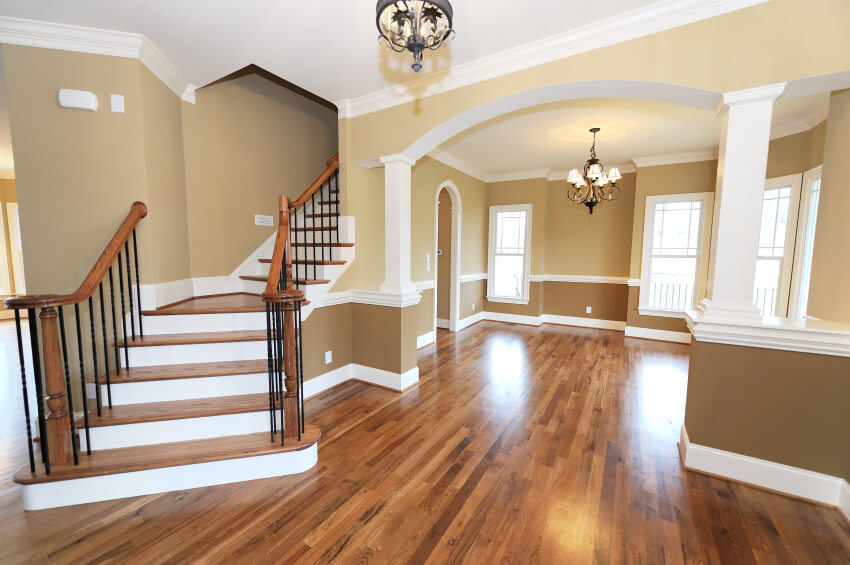Hiring a painting contractor can be a crucial decision for homeowners looking to revitalize their living spaces or improve their property's curb appeal. With so many options available, it's crucial to know what to look for and what questions to ask. Professional painters bring experience, high-quality materials, and a level of productivity that can transform your home in ways DIY projects often cannot match. In this ultimate checklist, we'll guide you through the key considerations, helping you make informed choices when hiring a painting contractor.
From understanding the differences between paint types to recognizing the signs that your home needs a fresh coat, we'll cover all you need to know. Whether you're contemplating an interior renovation or planning to tackle the outside of your home, you’ll be equipped with the insights to navigate the painting process seamlessly. Let’s dive into the essential elements that will ensure you choose the most suitable painting contractor for your needs.
Selecting the Appropriate Decorative Painter

When it comes to searching for the appropriate painting contractor, it is crucial to start with in-depth research. Start by asking for recommendations from relatives, colleagues who have previously hired painting services. Furthermore, online reviews and ratings can give insight into local contractors’ credibility. Make sure to verify that the contractor holds the essential licenses and insurance, as this protects both you and the workers in case of incidents or losses.
After narrowing down your selections, schedule consultations with possible contractors. During these discussions, discuss their expertise, the kind of painting projects they work with, and their method to preparing and painting your environment. Ask about their projected timelines and how they manage unexpected issues that may arise during the job. This will help you gauge their professionalism and ability to satisfy your individual requirements.
Finally, don’t forget to request for comprehensive written estimates from each contractor. These estimates should include labor costs, material expenses, and any extra fees. Taking the time to contrast these costs will give you a clearer understanding of the overall worth each contractor provides. Furthermore, make sure to ask about the quality of paint they use, as this can greatly impact the ultimate outcome and durability of your paint job.
Interior and Exterior Painting Essentials
When it comes to indoor painting, selecting the ideal paint color is crucial. The chosen hues can significantly influence the ambiance of each room. For example, cool colors like blue hues and greens tend to create a calm environment, while warm tones like red shades and yellow hues can instill vibrancy. Consider factors such as illumination, existing furniture, and the desired feel to ensure the best color choice. Experienced painters can offer guidance and samples to help you visualize the final look, making the selection process more efficient.
Outdoor painting not only enhances the aesthetic appeal of your home but also protects it from the elements. The best time to paint your house outside is typically during dry seasons with moderate temperatures, as this allows the paint to stick well and dry correctly. https://jeansbrake8.werite.net/brush-it-up-advice-for-hiring-pro-painting-experts of your home's exterior is necessary; signs such as dull paint, peeling, and mold indicate it may be time for a refresh. Quality exterior paint and proper preparation can significantly extend the lifespan of your paint job, ultimately reducing costs and labor.
Understanding various paint types and techniques is crucial for achieving the targeted results. Interior spaces benefit from different finishes, ranging from matte to glossy, depending on the room's use and the look you are going for. Similarly, exterior paint must withstand weather conditions, making durability a critical consideration in your choice. Techniques such as spraying and rolling each have their strengths; understanding which method suits your needs will help ensure a successful painting project both inside and out. Selecting a skilled contractor who understands these fundamentals is crucial for a smooth and high-quality result.
Comprehending Coating Types and Techniques
Picking the correct paint type is essential for attaining the intended look and longevity for your space. There are numerous choices available, including water-based, solvent-based, and unique paints. Latex paints are water-based and known for their fast drying time and hassle-free cleanup, making them a favorable choice for interior projects. Solvent-based paints offer a smooth finish and are ideal for high-moisture areas, but they take more time to dry and require cleaning agents for cleanup. Understanding the characteristics of each type will help you arrive at an educated decision based on your individual needs.
The technique used for applying paint can significantly affect the final result. Two common methods are spraying and roller application. Spray painting allows for a smooth application and can cover vast areas quickly, making it ideal for exterior projects or when achieving a perfect finish is essential. Roller application, on the other hand, is typically used for interiors and allows for greater precision over the application, especially in tight spaces or on textured surfaces. Each technique has its advantages and may be more suitable for various projects, so think about the scope of your job before making a choice.
In conclusion, exploring different paint finishes is key to achieving the appearance you want. Finishes range from matte or non-reflective, which offers a dull surface, to shiny finishes that reflect light and can improve colors. Silk and eggshell finishes provide a equilibrium between resilience and sheen, making them suitable for areas such as sitting rooms and bedrooms. Knowing the range of finishes on offer will help you choose the right one for each room in your home, ensuring that not only the color but also the texture aligns with your vision.
